20+ Years Experience
Specialist Soft Play Equipment
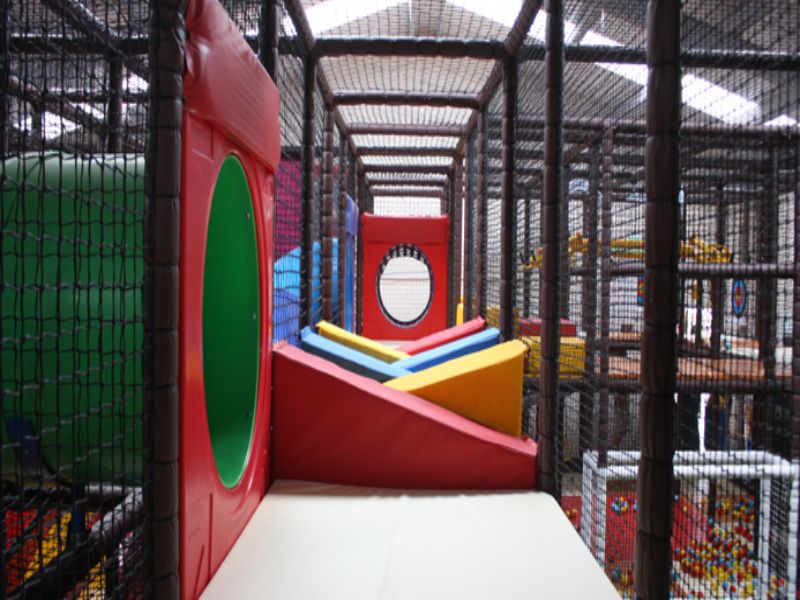
Enquire Today For A Free No Obligation Quote
Soft play equipment can help encourage physical activity in children while also improving their social, physical and cognitive development. It can provide an environment of safe exploration and learning with minimal risk or injury.
In a world inundated with glowing screens and potentially addictive video games, it is easy to overlook the importance of imaginative play and exercise for toddlers and young children.
Play centres are a great way for kids to explore active, physical play and release some pent-up energy they often contain. Soft play equipment encourages exploration and imagination, unlocked with the right exposure and opportunity.
Soft play equipment comes in all shapes and sizes, but is usually made up of interactive and imaginative pieces that are designed to encourage kids to explore and use their imagination while they play. Providing kids with soft play toys and structures encourages imagination, physical activity, social and language development, exploration, and creativity.
In this blog post, we will discuss the benefits of soft play equipment for children and why it should be a part of their lives.
Soft play equipment offers a range of stimulating and interactive activities for children to enjoy. To find out about the soft play equipment we install, please click here.
Soft play has been an integral part of the children’s play centre experience and home-based entertainment for decades.
Soft play consists of fun and safe covered foam shapes arranged in different patterns and designs depending on usage. This type of equipment is attractive to children because it helps them stay physically active while also engaging their minds creatively.
One of the major arguments for why soft play benefits families and children are that it addresses safety issues that can often arise with traditional playgrounds.
Soft play areas provide a soft landing for children if they fall or jump off the structure, giving parents peace of mind. The risk of injury is substantially reduced due to the safe, cushioned environment these structures offer.
Furthermore, these areas are designed specifically for the youngest age groups, featuring brightly coloured shapes and figures which are visually appealing to young ones.
There are several advantages of soft play for children. The most common benefits are:
Much evidence suggests introducing children to interactive soft play equipment from an early age is extremely beneficial.
With their wide array of benefits related to physical health, cognitive development and social interaction, such toys can truly be seen as invaluable tools for childhood development when used appropriately and monitored closely.
Providing an opportunity for children to climb, explore, and manipulate the pieces of soft play equipment encourages them to move around in a safe environment.
This can make climbing stairs, jumping over obstacles, and balancing more natural due to familiarity with the soft play equipment.
Therefore soft play can be very beneficial for children’s physical growth.
Our team can also offer sensory equipment to help with physical development.

Soft play equipment is great for helping to develop children’s gross motor skills. The dynamic textures and shapes of soft play equipment can be used to inspire creativity and free movement. Children can use these engaging and visually stimulating pieces to perfect their gross motor skills in a fun and safe way.
Proponents of using soft play equipment for gross motor development tout its ability to support and encourage a child’s exploration into different ways of moving and interacting with their environment.
Climbing, jumping, sliding, crawling, and scooting are all activities that can challenge their coordination, balance and strength.
The tactile nature of the equipment is particularly alluring to children, who often love the sensation of touching new materials. It also provides a safe platform for them to experiment within―almost like a mini-gym that helps hone those skills necessary for sports performance further down the line.
However, there are some opponents to soft play equipment when developing gross motor skills.
They argue that the lack of physical boundaries puts young children at risk as they could easily hurt themselves while exploring unfamiliar surfaces. Additionally, they fear that overstimulation of the bright colours or sounds from soft play equipment will lead to attention difficulties or overload in younger kids.
With thoughtful consideration from both perspectives, it’s clear that soft play equipment can be beneficial for gross motor development when managed correctly by adults or caregivers.
And when done so mindfully, this type of equipment can be a valuable tool in encouraging children to become active participants in their own physical journey — setting them up for success as they learn how to move and engage with their environment wisely and safely.
Some facts which also show the benefits include:
Soft play equipment can provide countless cognitive benefits as well. When children explore different colours, shapes, textures, and sounds, they can use their various senses while interacting with their environment.
This can aid in language development and problem-solving skills as it helps them learn how to predict what might happen when they take certain actions or interact with particular objects.
Soft play equipment is a great addition to any child-focused area, as it helps young ones to develop cognitively.
Cognitive development encompasses the enhanced abilities of children to remember, comprehend, and analyze their world. In this context, soft play equipment has been found to offer various benefits for children of all ages, such as improved problem-solving skills, increased hand-eye coordination, and better motor planning.
For example, activities and props on the soft play equipment encourage children to orient themselves spatially within the environment and use spatial relationships across multiple equipment elements to navigate their way around. Alternatively, props may be used as elements in logic-based puzzles that hone problem-solving skills and knowledge recall capacities.
Even simple activities like sliding down a slide require more complex motor planning than one might expect – a skill which is even more evident when considering multi-level structures comprised of numerous interconnected elements.
There is an extent of research that shows promising results for cognitive development for children who regularly interact with soft play equipment.
Moving forward, efforts must be made not just to provide access to such facilities in educational settings but also to scope out comprehensive studies into the potential benefits and drawbacks associated with the use thereof from a cognitive perspective.
When it comes to social interaction, soft play equipment has been found to encourage cooperative play amongst young children often.
As most pieces of soft play equipment require at least two individuals working together to accomplish a purpose (e.g., stacking blocks), this helps foster communication and collaboration between peers.
Furthermore, as they work together, they may develop friendships that stand the test of time.
As modern life has changed how children interact, many parents and educators alike have been wondering about the effects of a lack of play on psychological and social development.
On the one hand, some experts believe that unstructured play time can increase social skills, communication ability, and overall coordination. On the other hand, it is argued that soft play areas are essential for cognitive development, as these spaces foster creativity, problem-solving techniques, and motor skills.
Soft play centres are fundamental for cognitive development in children. With access to various numeracy and literacy toys, early years children can work together to take part in problem-solving games.
Unlike outdoor activities, which often involve specific roles like catching a ball or tagging another person, soft play equipment offers varying challenges for children of all ages.
Overall, both sides appear to stand strong in the benefits that soft play equipment can bring to a child’s psychological and social development.
Soft play areas offer numerous benefits to both children and parents alike. This type of playground encourages exploration, imagination, and creative expression for children.
By providing an area to engage in physical activity and practice gross motor skills, soft play enables children to develop their muscles and balance. In addition, it also helps to promote social interaction by allowing children to interact safely and explore their environment together.
The benefits of the soft play area centres extend beyond just physical development. Through active play, children may develop problem-solving skills and enhance their cognitive abilities. As a bonus, these playgrounds often make outdoor activities more accessible for families living in urban areas with limited green space.
By understanding the advantages of soft play equipment, families can make informed decisions about the best ways to foster a healthy environment for their children.
Regular and soft play equipment both have advantages, but there are notable differences between them.
Regular play equipment usually consists of swings and slides installed onto hard surfaces. These pieces of equipment may be plastic, metal, or even wood and create a standard playground for children to explore and enjoy with minimal parental supervision. This equipment is generally found outdoors.
Soft play equipment is more loosely defined as any child-friendly form of recreational activities that takes place on soft, often padded surfaces.
This type of play includes an expanded range of items, such as tunnels, mazes, climbing frames, obstacle courses, trampoline structures and ball pits. These are generally found indoors. Soft play equipment often focuses more on helping children develop skills linked to problem-solving and self-confidence in a fun environment.

While there are helpful elements to both types of play equipment, experts have furthered the discussion to focus on why soft play has specific benefits over regular outdoor playgrounds.
For example, buying soft play eliminates the need for parents to be physically present during their child’s outdoor playtime due to its higher security level – something which is impossible to do in regular playgrounds.
Soft play facilities typically implement strict safety measures for visitors to ensure the well-being of adults and children when utilising their services. For more information on safety guidelines, please click here: https://soft-play-equipment.co.uk/safety-guidelines-for-soft-play-installation/
Despite these benefits associated with soft play facilities and equipment, research suggests that combining both types within one area can optimise health outcomes further.
Soft play equipment can provide ongoing development and learning opportunities for children. It is designed to be a versatile and safe environment that encourages physical exercise, cognitive exploration, socialization and imaginative play.
Choosing the right soft play equipment for your space is important, as it can make or break a successful program implementation.
There are numerous options when deciding what soft play equipment to use. Depending on the available space, budget, needs, and objectives, facilities should select which type of play area will best accomplish their goals.
Ideas range from simple items like mats or balls to complex multi-station systems, trampolines or full soft climbable structures. All of these items provide different activities and levels of fun for different age groups, making them great choices for family centres, daycare facilities and early childhood programs.
What’s more, when selecting soft play equipment, there is no need to choose one option over another. Combining all the above ideas will create a wonderful playground that provides endless entertainment and challenges for children of all ages.
For example:
All these ideas come together to create an inspirational space, but it is important to keep safety in mind when introducing soft play into any program or facility.
It’s also important to consider how best this equipment can be used with children by following certain tips and guidelines for successful implementation.
Using soft play equipment with children can be a highly beneficial and rewarding experience for both parents and children in the short and long term. However, it is important to know when and how to use such equipment for safety and development concerns.
To help ensure a positive playtime experience for you and your children, here are some tips for using soft play equipment:
Always ensure that the soft play equipment is properly maintained and secure. Check all connections, ties and fastenings to ensure they are safe before allowing children to use the play equipment. Remove or tie up any dangling items that may pose a hazard to young children.
Find out more about safety guidelines here: https://soft-play-equipment.co.uk/safety-guidelines-for-soft-play-installation/
The challenge level provided by soft play should increase in quality and complexity as children develop physically, cognitively, emotionally and socially.
When introducing new equipment or activities to the area, be sure they are appropriate to your child’s maturity level. This can help avoid fear or injury from more advanced tasks that may be too challenging for them.
Soft play equipment can be an effective tool for interacting with younger children. Parents, grandparents, siblings and other caretakers should interact with and accompany children as they play to provide encouragement, supervision, discipline and guidance as needed.
Playing together also provides an opportunity for creative expression and enhanced communication between all participants in the activity.

Soft play can also teach cooperation and empathy among children of varying ages and abilities.
Allow plenty of time for social interaction between peers without adult interference whenever possible; this works best when those of similar age mix together in groups infrequently interrupted by caretakers or teachers who can facilitate positive conversations.
Set up designated areas reserved only for relaxation or conversation if desired.
Soft play allows children to explore their environment in a safe and supportive atmosphere. Encourage them to try new activities or techniques if they seem receptive.
This can help foster independent learning skills such as problem-solving, curiosity, goal-setting and perseverance—all while having fun! Make sure they have access to comfortable seating (such as foam chairs), so they can rest as needed during long periods of activity.
During soft playtimes, it is important to create flexible spaces within the area depending on the age group served. Use smaller furniture pieces like cubbies, toy carts or trunk organisers within the area, which can easily move around as needed according to changing needs or preferences of users throughout the day/week/month.
Using soft play equipment with children can be an enjoyable way to improve development through:
Caution must always be first regarding safety concerns so that all individuals involved benefit from a positive experience overall!
Soft play equipment that encourages interactive, imaginative play is ideal for children.
Options like ball pits, climbing frames, and slides are great for fostering physical activity and coordination.
Other equipment that can cultivate social skills include role-playing toys such as mini kitchens or dollhouses.
Simple items like beanbags and ride-on toys are also beneficial as they help with balance and stability.
Ultimately, soft play equipment should be age-appropriate and fun to keep children motivated to engage with it.
Potential risks associated with soft play equipment include physical and psychological hazards.
Physically, there is the risk of impact injuries due to the equipment being soft but still harsh enough to cause damage if a heavy weight or sharp object were to be dropped.
Other potential dangers include falling from a height in an uncontrolled manner, being injured by other children’s actions, or slipping and tripping on toys left out on the ground.

Soft play equipment can offer a range of benefits to children’s physical, cognitive and social development.
On a physical level, such equipment enhances motor skills and encourages children to get up and move around, fostering balance and agility.
Creating different levels and pathways for children to explore and climb develops their spatial awareness and helps them build strength and endurance.
On a cognitive level, soft play equipment boosts problem-solving abilities by providing challenges that help children think outside the box as they plan how to reach their destination safely. They also learn about cause-and-effect, taking risks, being creative, and working out solutions.
Finally, on a social level, playing with others in the same space allows children to develop better communication skills as they share ideas, negotiate boundaries or even resolve conflicts.
This type of play helps them learn the importance of cooperation while increasing their self-esteem as they gain confidence in their skills.
Overall, soft play centres and the equipment inside have many benefits.
Our soft play structures can be installed at a school, play centre, home, and many other areas.
If you are interested in having soft play equipment installed at your establishment, please get in touch with our team today.
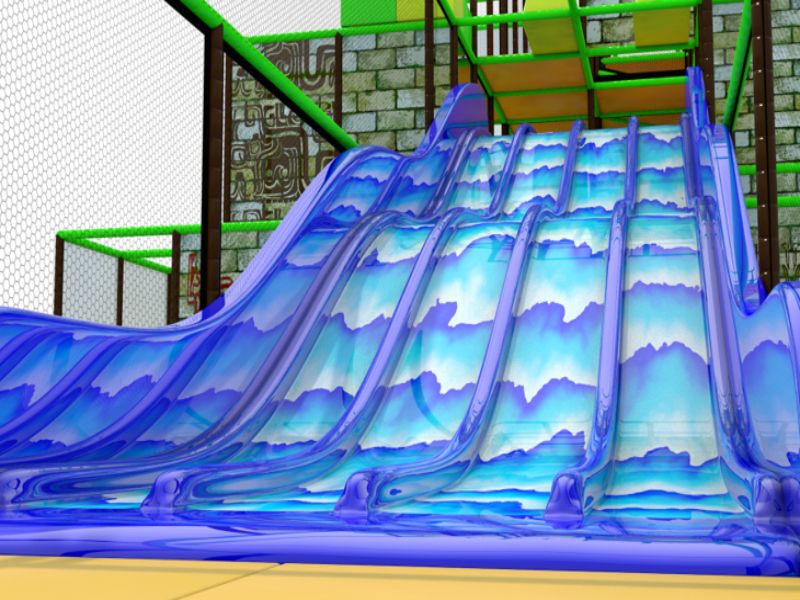
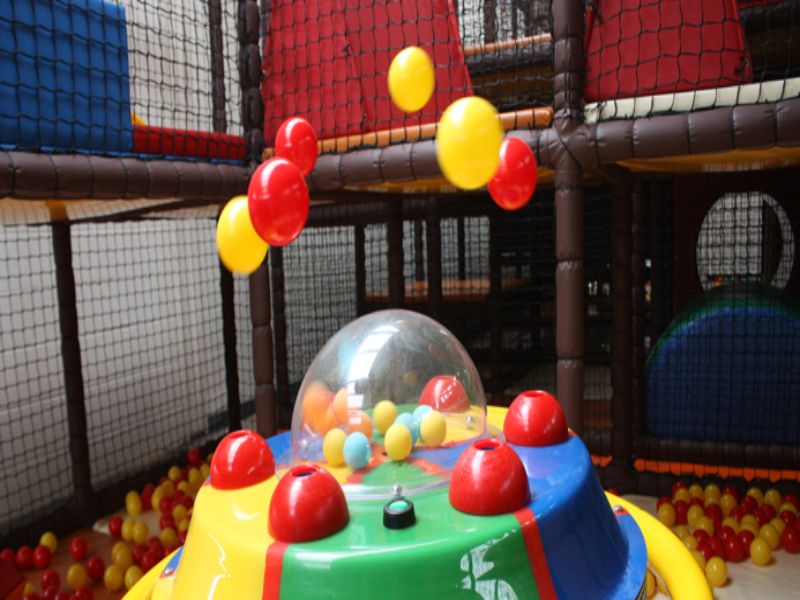
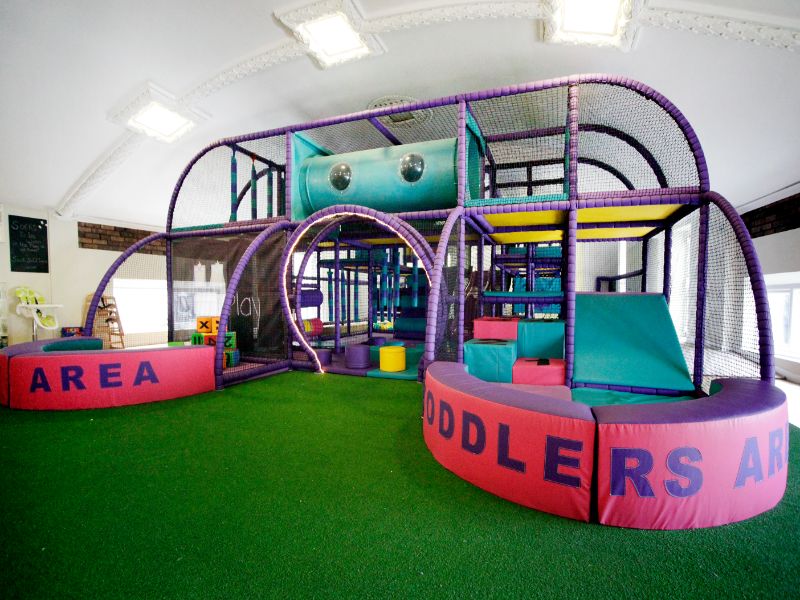

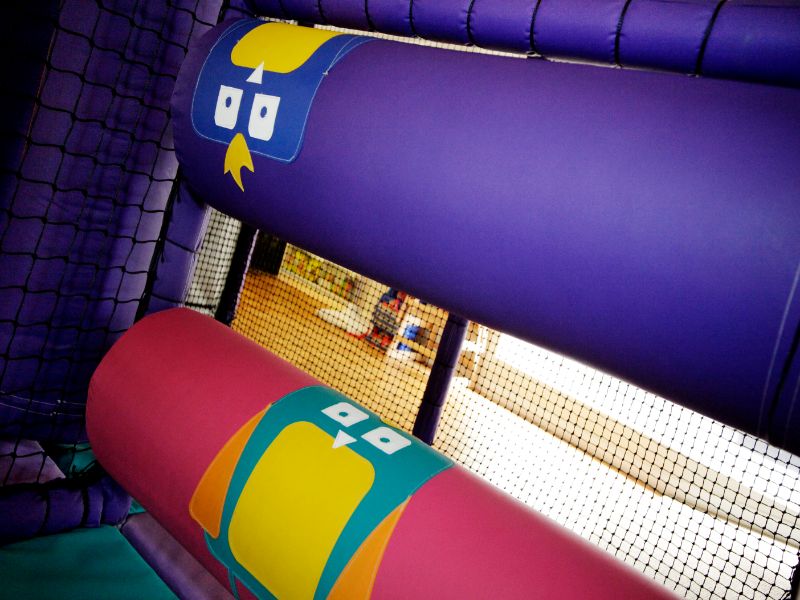
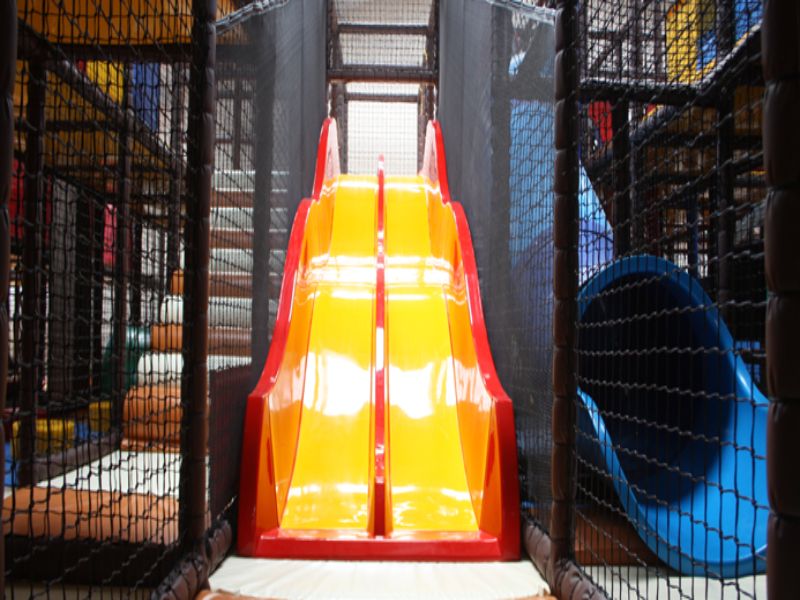

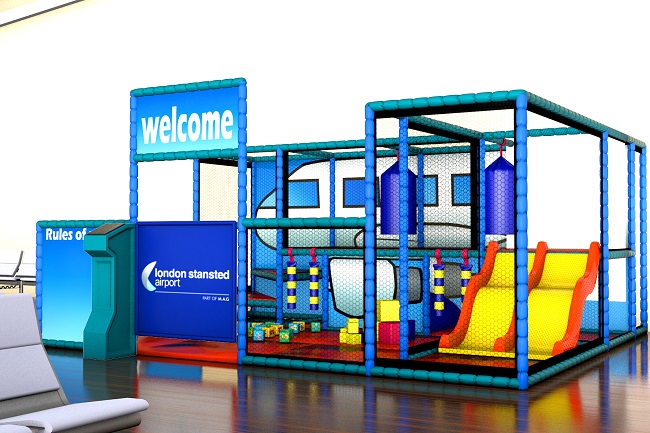


We Aim To Reply To All Enquiries With-in 24-Hours